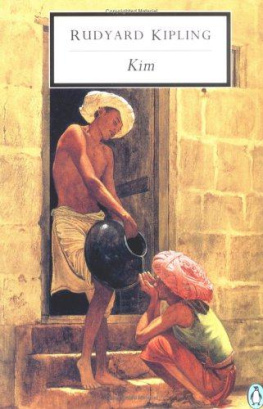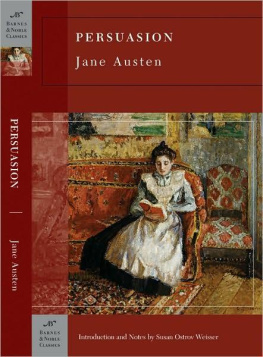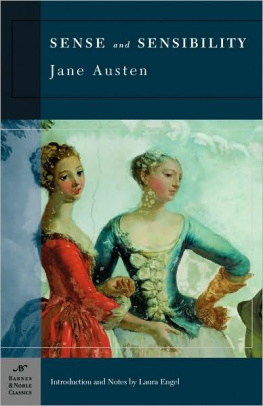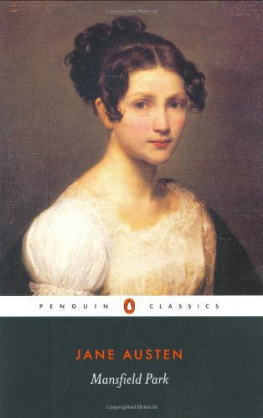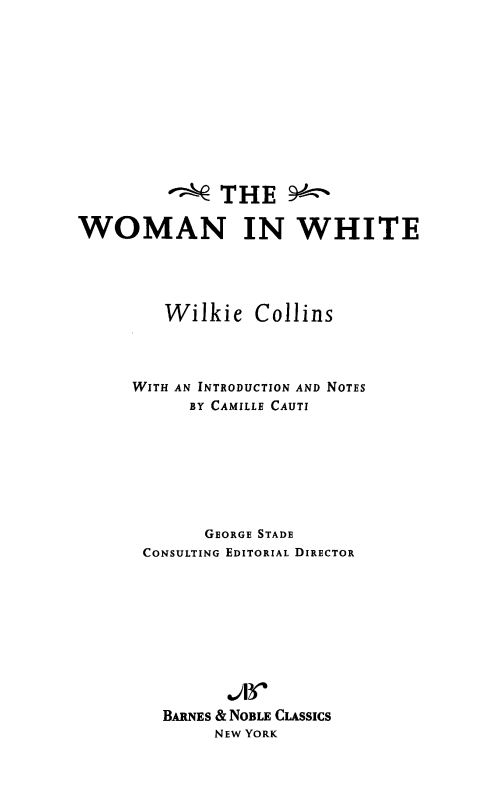
Table of Contents
FROM THE PAGES OF THE WOMAN IN WHITE
This is the story of what a Womans patience can endure, and what a Mans resolution can achieve. (page 9)
There, as if it had that moment sprung out of the earth or dropped from the heavenstood the figure of a solitary Woman, dressed from head to foot in white garments. (page 24)
For aught I knew to the contrary, the whole future of Laura Fairlies life might be determined, for good or for evil, by my winning or losing the confidence of the forlorn creature who stood trembling by her mothers grave. (page 95)
In the mean time, let me thoroughly understand the object to be gained by my interview with Anne Catherick. Is there no doubt in your mind that the person who confined her in the Asylum was Sir Percival Glyde? (page 107)
Her looks and tones, when she spoke, were of a kind to make me more than seriousthey distressed me. Her words, few as they were, betrayed a desperate clinging to the past which boded ill for the future. (page 141)
Who else is left you? No father, no brotherno living creature but the helpless, useless woman who writes these sad lines. (page 191)
His white mice live in a little pagoda of gaily-painted wirework, designed and made by himself. They are almost as tame as the canaries, and they are perpetually let out, like the canaries. They crawl all over him, popping in and out of his waistcoat, and sitting in couples, white as snow, on his capacious shoulders. He seems to be even fonder of his mice than of his other pets, smiles at them, and kisses them. (page 216)
Tell him, next, that crimes cause their own detection. Theres another bit of copy-book morality for you, Fosco. Crimes cause their own detection. What infernal humbug! (page 228)
Human ingenuity, my friend, has hitherto only discovered two ways in which a man can manage a woman. One way is to knock her downa method largely adopted by the brutal lower orders of the people, but utterly abhorrent to the refined and educated classes above them. The other way (much longer, much more difficult, but, in the end, not less certain) is never to accept a provocation at a womans hands. It holds with animals, it holds with children, and it holds with women, who are nothing but children grown up. (page 317)
The nurse, on the first night in the Asylum, had shown her the marks on each article of her underclothing as it was taken off, and had said, not at all irritably or unkindly, Look at your own name on your own clothes, and dont worry us all any more about being Lady Glyde. Shes dead and buried; and youre alive and hearty. (page 420)
All remembrance of the heartless injury the mans crimes had inflicted; of the love, the innocence, the happiness he had pitilessly laid waste; of the oath I had sworn in my own heart to summon him to the terrible reckoning that he deservedpassed from my memory like a dream. I remembered nothing but the horror of his situation. I felt nothing but the natural human impulse to save him from a frightful death. (page 505)
My life hung by a threadand I knew it. At that final moment, I thought with his mind; I felt with his fingersI was as certain, as if I had seen it, of what he kept hidden from me in the drawer. (page 577)
A great crowd clamoured and heaved round the door. There was evidently something inside which excited the popular curiosity, and fed the popular appetite for horror. (page 612)
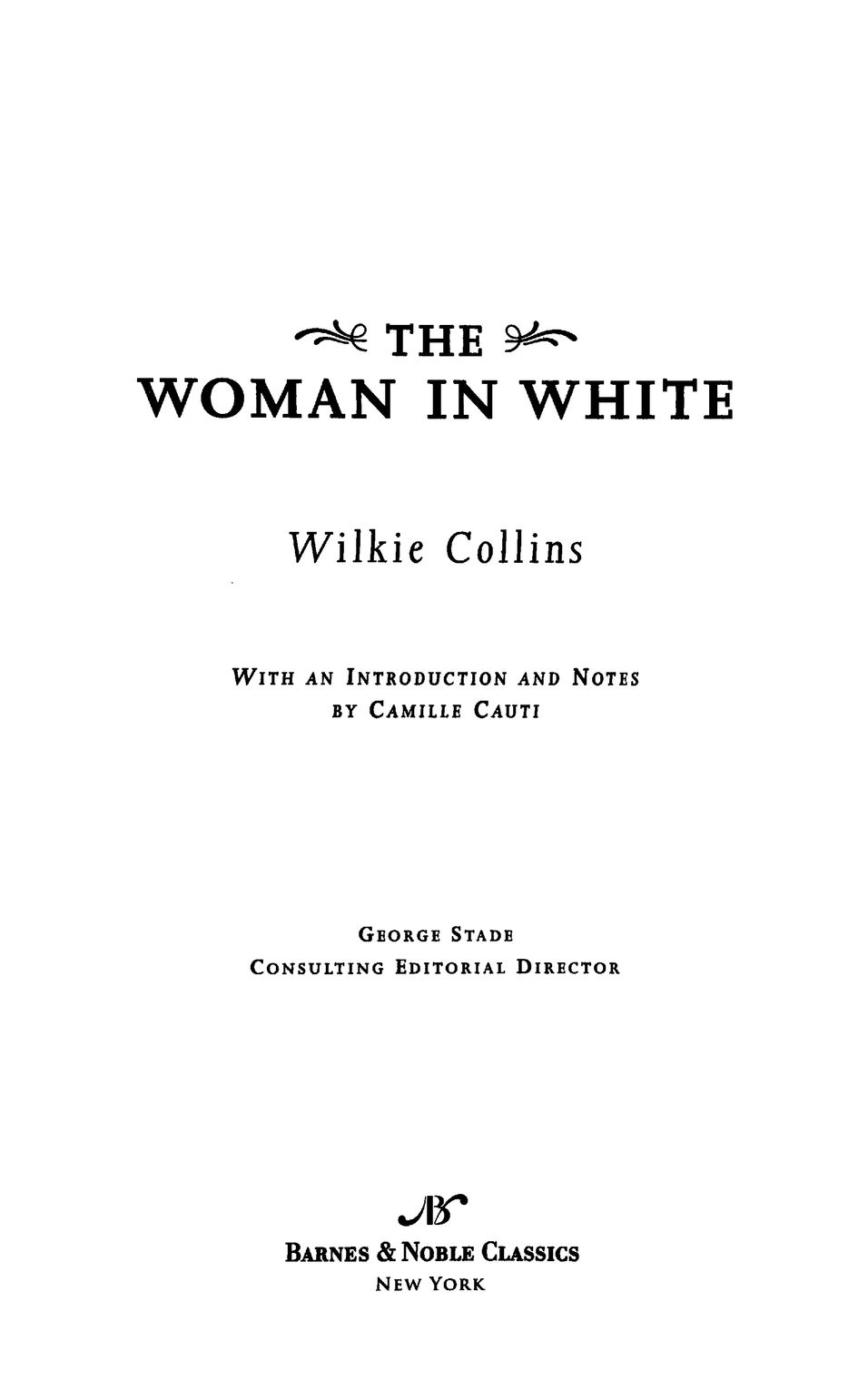
WILKIE COLLINS
William Wilkie Collins was born in London on January 8, 1824, to William and Harriet Collins. William Collins was a landscape painter who gained financial security by courting aristocratic patronage; his strict Tory (conservative) political views would later contrast with the bohemianism and political progressiveness of his son. Young Wilkie found more in common with his free-spirited mother, whose family included several successful artists. Before her marriage, Harriet also painted and supported herself by teaching and working as a governess; she exhibited an independence of character that would inspire a number of Wilkies fictional heroines.
William was determined to provide his two sons every social opportunity: He sent them to private schools, and Wilkies childhood included extended travels in Europe and training in painting. After exhibiting landscape paintings at the Royal Academy and serving an apprenticeship at a tea-importing firm, Collins began writing; he published his first story, The Last Stage Coachman, in 1843. In response to increasing pressure from his ailing father to abandon writing, Collins studied law at Lincolns Inn. After his father died in 1847, Collins began to pursue writing as a career and never practiced law; however, his legal training served him well when he wrote the first English-language detective stories.
Collins met Charles Dickens in 1851, and their ensuing friendship proved personally and professionally fortuitous. Over the next decade, with Dickens as an active mentor and publisher of his work,. Collins wrote prolifically. In 1859 he met Caroline Graves, a widow, who remained, with some interruptions, his companion until his death. A simultaneous long-term affair with Martha Rudd earned him a scandalous reputation, even among open-minded literati. Collinss unorthodox personal life did little to harm his literary success. Over the course of his career, he published more than twenty-six novels, including The Woman in White (1860), which made him one of Britains most popular writers; the other novels Basil (1852), No Name (1862), and The Moonstone (1868); and countless stories, articles, plays, and essays.
Productive until his final years, Wilkie Collins suffered from increasing ill health and laudanum addiction until his death on September 23, 1889. Although some of his work is perhaps overtly didactic in dealing with difficult social issues, Collinss writings are extremely varied and provide remarkable prototypes for the femme fatale and the modern detective novel.
THE WORLD OF WILKIE COLLINS AND THE WOMAN IN WHITE
| 1824 | William Wilkie Collins is born in London on January 8 to William and Harriet Collins. His father is a Royal Academy landscape artist with Tory (conservative) political leanings. |
| 1828 | Wilkies brother, Charles Allston Collins, is born. |
| 1832 | Britains first Reform Bill almost doubles the number of voters, mostly members of the middle class. |
| 1833 | The British Factory Act is passed, prohibiting the employment of children under age nine and introducing factory inspections. Slavery is outlawed in the British Empire. |
| 1835 | Wilkie and his brother attend the Maida Hill Academy. |
| 1836- 1838 | The Collins family lives in France, Germany, and Italy. Wilkie refines his painting skills by studying the work of the old masters in Rome. |
| 1837 | The Peoples Charter, a British working-class movement, is founded; the struggle for universal suffrage begins. Victoria becomes queen. |
| 1838 | Wilkie attends Reverend Henry Coles school. Charles Dickenss Oliver Twist is published. The National Gallery opens in London. |
| 1839 | The Opium War breaks out between Britain and China. |
| 1841 |


